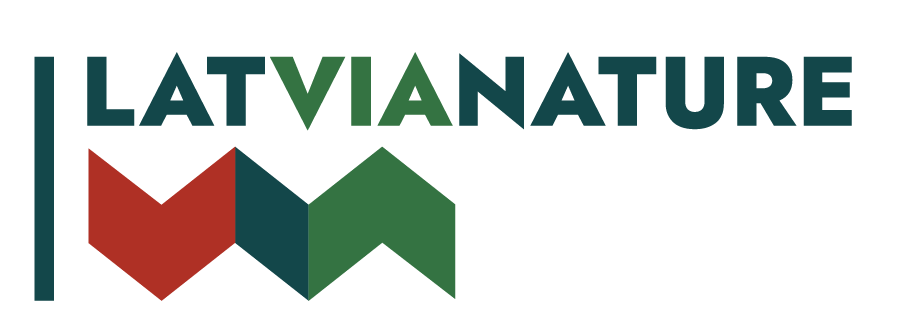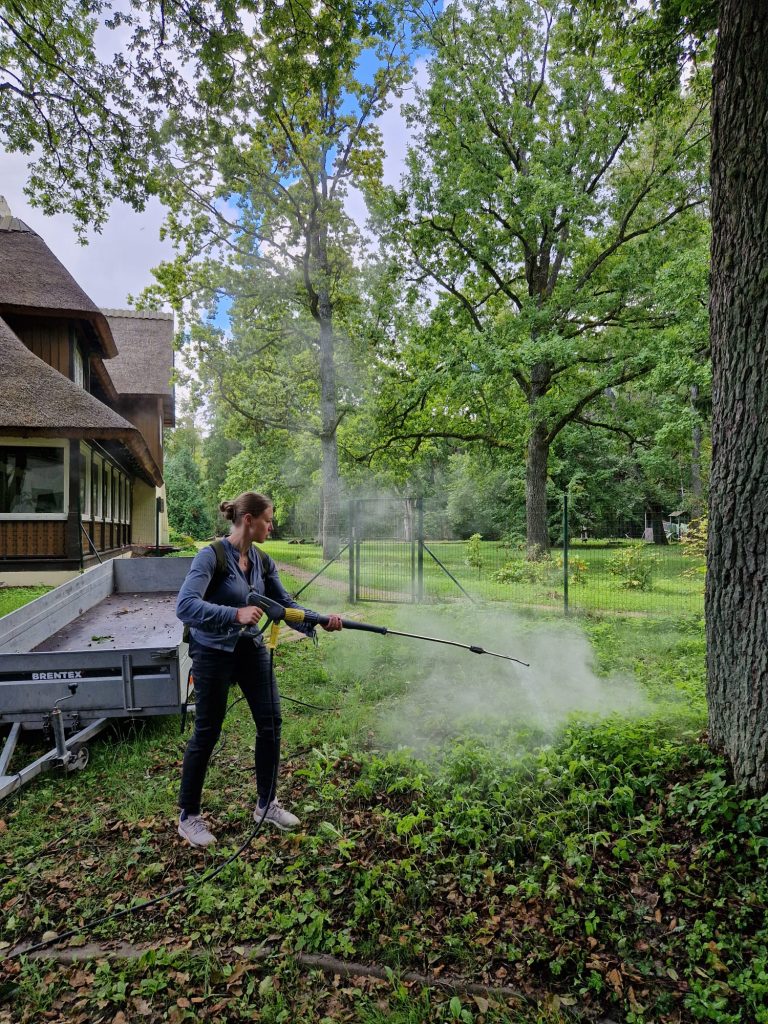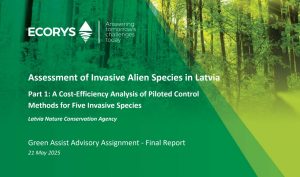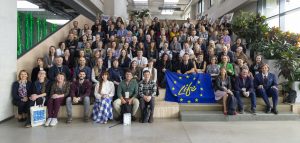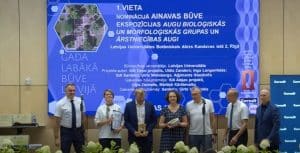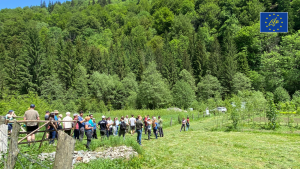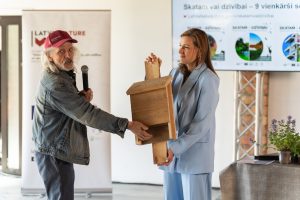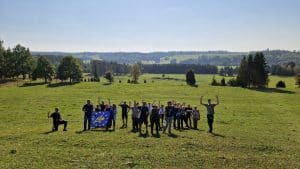Steaming, grazing, milling, uprooting, and mulching—along with other methods—are currently being tested by the LatViaNature expert team to measure their success in eradicating invasive alien species. These methods were also demonstrated and discussed at an experience exchange event among dedicated invasive species experts from Latvia and Estonia on August 13, 2024.
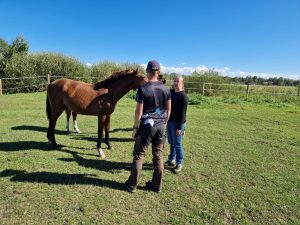
Experts from the LatViaNature project shared their preliminary results with counterparts from the Estonian Environmental Board and the State Plant Protection Service of Latvia. To gain an in-depth overview, experts visited pilot sites in Ķemeri National Park, the Nature Park Ragakāpa, and the Nature Reserve Vecdaugava. At these sites, the eradication efforts focus on invasive Canadian goldenrod Solidago canadensis, Himalayan balsam Impatiens glandulifera, and dwarf serviceberry Amelanchier spicata.
This event was a valuable opportunity to share insights in the ongoing battle against invasive species—a pressing issue that impacts our precious ecosystems.
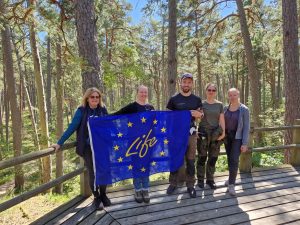
Why does it matter? Importantly, addressing invasive species is crucial for the conservation of nature and biodiversity. Often, the key to success lies in the fine details of planning and implementation—small nuances can make a significant difference. That’s where the power of collaboration and experience exchange is irreplaceable!
